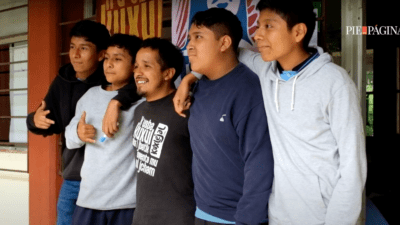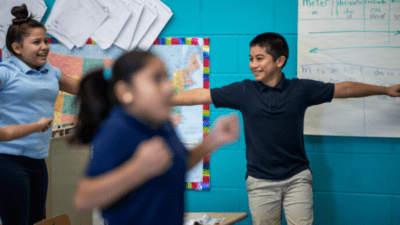This post is also available in: Español (Spanish)
This post first appeared in English and Spanish in El Tiempo Latino. WKKF and EveryChildThrives.com extend their gratitude for All4Ed’s permission to repost.
I’m sure at some point you’ve found at least one wish list from a teacher, probably your own son’s or daughter’s teacher. Some of these lists have extra special things that make learning more fun, like technology, stickers, or puzzles. Others include items that break your heart to see on a wish list — chairs to sit on, crayons to color, pencils to write or even snacks to feed students.
As a former teacher, I also had a wish list. Each year, before the school year began, I would create a wish list for my class.
You may wonder, “Why do teachers ask for such basic things? Shouldn’t those things be covered by your school or district? Shouldn’t our government help these teachers and students?”
The answer is simple, yes, teachers should have access to basic materials. Unfortunately, there are a number of complications and reasons why teachers in the United States do not have enough materials for their students, or because some programs are offered in some schools and not in others.
However, to start improving some of these challenges, an important place to start is by improving the Title I program. Recently, the organization where I work, All4Ed, published a series of reports “Understanding and Improving ESEA Title I.” Our papers look at what works and what doesn’t work about Title I and offers recommendations for improving this essential program for our nation’s students.
The Title I program is a federal funding program, created to ensure that every student, no matter how much money their family has, has the opportunity to receive a high-quality education. At its core, the law is a civil rights law, created during a time of great federal anti-poverty advance, during President Johnson’s presidency.
Since the program’s inception in 1965, millions of students have benefited from the additional resources the Title I program has supported. Today the program supports more than 26 million students – nearly 36% of all students enrolled in public schools. For many years we have seen huge gains in test scores and college enrollment for Latino children. These successes, in large part, are due to investments in schools and education.
Although we have experienced some painful challenges after the pandemic, there is no denying the historic and positive impact of our investment in the education of Latino children and children from low-income families, including investments made through the Title I program.
However, more can be done to improve the program. As it is, the program does not work as designed. More than 70% of all funding has gone to school districts with poverty rates below 30%, meaning less money has been provided to the school districts that need it most. Even more alarming is that there are 1,144 schools in the country with the highest poverty concentrations, more than 90%, do not receive a penny from Title I, while nearly 1,200 schools with the lowest concentration of poverty, less than 10%, are receiving funding.
Unfortunately, there is no simple solution to this problem. It is not school districts or states that prevent schools from benefiting from these resources. It’s complicated because there’s a lot that determines how much money a school receives from Title I. Like all federal programs, Congress determines how much money will be invested in a program. In Title I it is through four different formulas. Like I said, it’s complicated.
Over the past two years, Congress has dramatically increased its investment in the Title I program, to nearly $2 billion, the largest increase in recent history. However, more can be done. In light of the pandemic, these increases have been critical; But more can be done to ensure that children in low-income communities benefit from this program. For example, I mentioned that Title I is made up of four formulas. We found that the formula that does the best job of directing funds to children from low-income families has not been increased for 20 years. Congress can change that.
This is especially important because three out of four Latino children attend a Title I school. In fact, our children make up the largest proportion – 37% – of the children enrolled in these schools. Any investment in Title I not only supports the educational advancement of students from low-income families, but also supports closing educational gaps for Latino children.
As another former teacher, Lyndon B. Johnson, said, “As president of the United States, I deeply believe that no law I have signed or will sign means more to the future of America.” It is our responsibility to ensure that we make the necessary changes so that our Latino children, and all students in this nation, have doors open to possibilities through an excellent education.







Comments